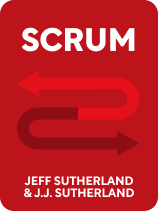

This article is an excerpt from the Shortform book guide to "Scrum" by Jeff Sutherland. Shortform has the world's best summaries and analyses of books you should be reading.
Like this article? Sign up for a free trial here .
Trying to figure out how to prioritize tasks in the workplace? How can the Scrum method help you decide which tasks should be tackled first?
If you have so many tasks at work that you’re overwhelmed, try using Jeff Sutherland’s Scrum method. In his book Scrum, Sutherland teaches readers how to organize their projects by figuring out which tasks will have the biggest impact.
Here’s how to organize and prioritize your tasks.
Prioritizing Work
When starting a project, Sutherland says the first step is to develop the overall vision you have for your company: what problems you’re going to solve, what you’re going to make, how you’re going to make it. Once you know what you want to build, you must prioritize the things you need to do according to the value they bring to the project.
Here’s how to prioritize tasks in the workplace.
Assess What Tasks Are Needed and Rank Them
Sutherland says the first thing to do when figuring out how to prioritize tasks in the workplace is to create a task list, or what he calls a “backlog”: a list of all the things that need to be done to make your vision a reality. The task list should include every possible task that might be needed for the end product.
Then, with the task list complete, go through the entire list and rank each item by importance. To do so, ask the following questions:
- What will have the biggest impact?
- What is most important to the customer?
- What will make the most money?
- What items are the easiest to complete?
Once you have a clear picture of which tasks will bring the most value in the least amount of time, begin working on those tasks.
Traditional project methods would take these tasks and make a big roadmap for completing the project. The Scrum method takes a much simpler and straightforward approach, by simply beginning on the most important tasks without a large, comprehensive plan.
Further, the Scrum method leaves room for adaptation, which is a key part of the Scrum framework. It’s important to remember that the task list is always subject to change. It’s rare, Sutherland claims, that what a team thinks is most important to the customer actually is. As your project develops, you may find it necessary to move items higher or lower on the task list, add or remove items from the list, or even change directions entirely if market conditions change drastically enough.
| Covey’s Time Management Matrix In First Things First, Stephen Covey gives a framework for prioritizing tasks. The two things you should consider when choosing a task are importance and urgency. In the business sense, importance would be the amount of value a task brings to the project. Urgency deals with tasks that require immediate action. Covey suggests prioritizing importance over urgency, as unimportant but urgent tasks can be a huge waste of time. Important and urgent tasks are dangerous. You want to avoid being in the position of having to rush to finish something important. This is similar to Sutherland’s advice to tackle the most important tasks first. |
Clarify and Estimate the Task List
Before moving on to the Sprint, Sutherland says the Developers should go over the task list and answer three questions. These questions will help the team ensure that the tasks are clearly defined and achievable, while also giving them a reference point for the amount of work future endeavors will take.
- Is each task doable? The team should have all the information and tools they need to complete the task.
- How much effort will each task take? The Developers should estimate the amount of work every task will require. Later, they’ll use these estimates to determine how many tasks will be completed in a certain amount of time. Remember to base your estimates on relative size, not length of time.
- Is there a standard for completion? There should be clearly defined requirements for a task to be considered finished. Each completed task should provide tangible value to the project. It should be able to be demonstrated and, if possible, tested by customers or other outside sources.
| How to Assign Tasks Crucial Conversations gives advice on how to assign tasks once you’ve decided what you want to do. In a Scrum team, the Developers are in charge of task assignment. According to Crucial Conversations, assignments have four elements, which we’ll examine through the lens of a Scrum project: 1. Identify the tasks: The tasks will be provided to the team by the Product Manager. The Developers should make sure they know precisely what they are trying to accomplish. 2. Identify who’s responsible: Assign each task to an individual or group of individuals. In a Scrum project it should be clear which Developers are working on each assignment. 3. Set deadlines: The Scrum framework is against setting specific deadlines for the completion of the project, but it may be helpful and motivating to set smaller deadlines for individual tasks. 4. Decide how you’ll follow up: The standard for completion serves as a follow-up for each task, as it holds the team accountable for full completion of a task. This is the step that corresponds most closely to Sutherland’s advice to Developers—his advice to ask the three questions examining the tasks is a more detailed exploration of how a Developer would follow up. |

———End of Preview———
Like what you just read? Read the rest of the world's best book summary and analysis of Jeff Sutherland's "Scrum" at Shortform .
Here's what you'll find in our full Scrum summary :
- Why the "Waterfall Method" leads to inefficiency and wasted money
- An explanation of the Scrum method and details on how to implement it
- How to use Sprints to get more work done






